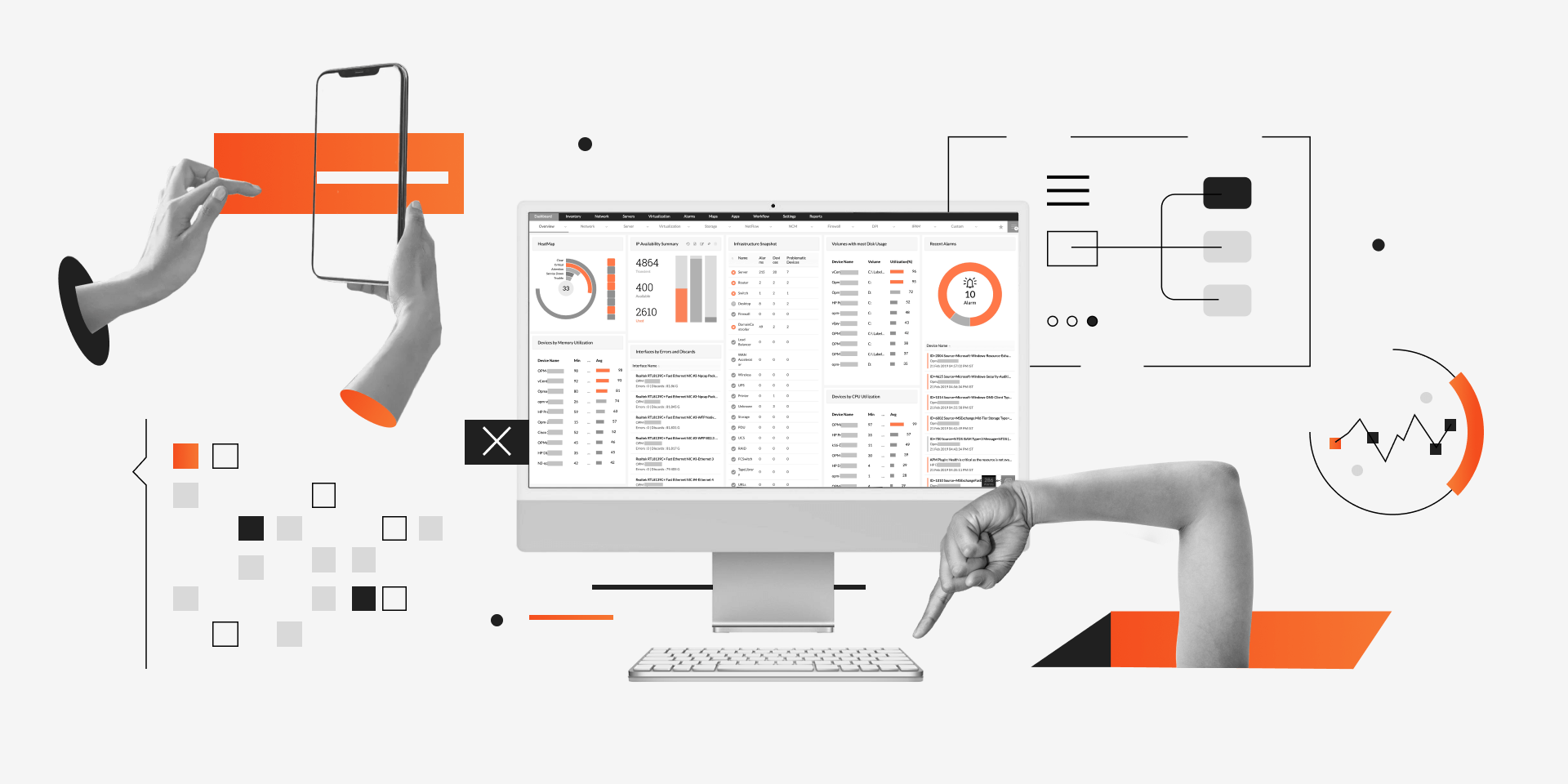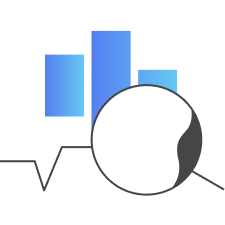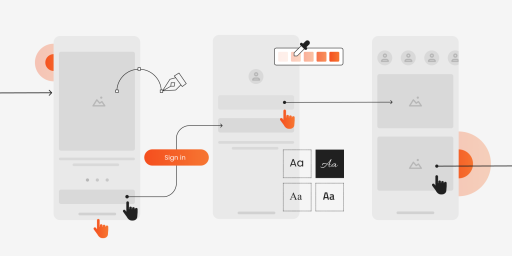Skipping early testing is the worst thing you can do. Unless your project is based on the Waterfall model, the earlier you start testing the software product, the less likely you are to encounter major issues down the line. This is what one of the software testing principles says, and we can’t agree more. Early testing allows you to spot potential issues with the product before they have a chance to embed in the codebase, saving you lots of time, money, and headache in the long run.
As obvious as this may sound, many teams, including tech giants, still neglect this principle, choosing to test their software after it’s been developed. The result? They simply do not have enough time to check all functional and non-functional aspects of the product, leading to numerous costly bugs and errors in the final release.
A case in point is TikTok. Who would have thought that a company with such a name would skip software testing? But that’s exactly what happened in May 2021, when one day all users logged into their profiles just to find that all of their followers were gone. Due to a tiny glitch, the system had written off the number of users’ follower count to zero, causing a lot of frustration among vloggers. And while this issue was fixed overnight, many people cast doubt on the reliability of this social network – a reputational damage that could have been avoided if testing had been done as it should have been.
This is just one of the many examples of how bugs can slip through final versions of products and affect user experience. And if with TikTok, nothing bad happened and the company managed to restore their reputation relatively quickly, the consequences of some other bugs, especially in regulated industries like finance and healthcare, could be devastating. That’s why the role of early testing in the software development cycle cannot be underestimated.
Key Takeaways
- Early testing saves 30 times more cost than fixing bugs later in development. Finding issues in requirements costs almost nothing compared to post-release fixes.
- Static testing examines requirements, design, code, and documentation without executing the software. This prevents defects before they embed in the codebase.
- Left-shift testing starts before any code is written. Testers work alongside developers from day one rather than waiting for completed features.
- Key principles include early tester involvement, continuous testing throughout SDLC, TDD/BDD methodologies, and test automation for efficiency.
- Static testing covers specifications, user stories, design mockups, code review, test artifacts, user manuals, and infrastructure setup.
- Implementation challenges include increased initial effort, resistance to change, skill gaps, and time/budget constraints that teams must address.
- Early testing improves team communication, increases development productivity, and lays the foundation for effective dynamic testing later.
- Test automation is essential for early testing success. Manual testing alone cannot handle the volume of continuous testing required in Agile environments.
- Companies using early testing achieve faster time-to-market, reduced development costs, and higher-quality products ready for use from day one.
- Training teams and choosing the right tools are critical for successful early testing implementation alongside setting clear milestones and quality-first culture.
Understanding the Concept of Early Testing
Early testing, also known as left-shift testing, means getting a jump on testing as early as possible in the software development process. In fact, this often starts even before any code is written, which is exactly what sets it apart from the traditional approach in the Waterfall model, where testing is shifted up to the very right of the development pipeline.
In Agile development, early testing is the fundamental principle that ensures quality is baked into every phase of a software project. Agile teams view testing as an ongoing process, not just a final step. It is performed in each sprint, where every feature or functionality is tested as it’s developed, allowing developers and testers to immediately identify potential issues and fix them early without waiting for them to snowball into costly bugs.
Start testing early and watch your product evolve without unnecessary roadblocks
Key Principles of Early Testing
Early testing isn’t just some kind of trend. It’s a key factor in preventing issues from escalating into expensive and time-consuming bugs. Here are the core principles defining early software testing:
Early involvement of testing
The first principle goes like this: testing should commence as early as possible, without waiting for a new product or new feature to be completed. Testers should work alongside developers and key stakeholders to get a grasp of the product’s requirements and business aims and to foresee potential problems that can occur in the process.
Moreover, the insights of QA engineers can be a valuable asset in itself. When involved early, testers can provide feedback on the feasibility of requirements, ensure testability is considered from the very beginning of the project, and suggest improvements that might not be immediately obvious to other members of the team.
We at Testfort recommend involving all people responsible for the quality of the software product as early as you can. The collaborative work between stakeholders, testers, and developers can be the difference between just another middle-of-the-road application and a high-quality product and.
The process of validating the project’s requirements and supporting documentation, which is usually done at the beginning of development without executing a code, is called static testing. QA teams, as well as other people responsible for the product’s future, should perform static testing practices in the initial phase of the project.
Continuous testing throughout development
The second key principle is continuous testing. In Agile development, teams don’t leave testing up to the end of the development cycle. Instead, they integrate into each phase of SDLC. This means that every time a code changes, they perform a series of manual and automated tests to ensure the update hasn’t introduced new bugs or broken down existing functionality.
This approach not only helps catch and resolve issues quickly, saving businesses thousands of dollars that would otherwise be spent on fixing them prior or post-launch but also promotes a culture of accountability, where developers strive to build clean code from the ground up.
Test-driven development and behavior-driven development
Test-driven development (TDD) and behavior-driven development (BDD) methodologies go hand-in-hand with an early testing approach. In Test-driven development, the process begins with writing a failing test case for specific functionality and then developing the code to make the test pass.
BDD, in turn, builds on the principles of TDD but takes it a step further by involving non-tech specialists to evaluate how the app behaves from the user’s point of view. This approach helps make sure that both the technical and business are on the same page from the start, and the product works well and meets user expectations.
Test automation for speed efficiency
Early software testing is closely related to automated testing. If tests were not automated, imagine what testing would be like! By the end of the cycle, these test cases would pile up, requiring a lot of manpower, leading to significant delays.
In addition to bringing structure, automating regression, unit, and integration tests helps free up the QA team from tedious work. Instead of running thousands of tests after each code update and doing routine tasks, they can focus on other more important activities, such as exploratory testing, which can help catch issues that are often missed by automated tools.
By following these principles, teams can prevent many critical errors and save the project budget. Drawing from unfortunate experiences of many development teams, the savings can be huge. A bug found and fixed early in the SDLC is 30 times cheaper to fix than one found later in development, which is too big a figure to simply ignore.
End-to-End Automation for a Reliable Wheel End Products Manufacturer
Why Early Testing Is Crucial for Your Product’s Quality
Early testing is akin to living a healthy lifestyle. We all know that drinking water and doing physical exercises is good for us, but even talking about it is boring. So, instead of just telling you things you already know, we’d like to give you a somewhat different perspective on why early testing is crucial, which may motivate you to implement it right away, if you haven’t done so already.
Preventing design and code defects
Early testing is necessary to identify inaccuracies, contradictions, mismatches, and redundant requirements. It helps prevent not only over-expenditure but also disastrous events, such as the Therac-25 case, of which you might have heard – the case that truly shocked a lot.
The Therac-25, a machine designed by Canada’s AECL, was supposed to provide radiological treatment to cancer patients. But in reality, it was slowly burning them alive! The worst part is when the first complaints started coming in, they weren’t even heard, because the company’s engineers claimed that such inaccuracies in radiology settings were simply “impossible.”
The problem wasn’t solved even after the AECL did some bug fixing and returned the machines to hospitals. Experts later proved that the root cause was the overall poor software design and almost atrocious development practices. Whatever was wrong with the Therac-25, it could not have been fixed after its release or in the final stages of development.
Let us help your product’s quality from good to great!
Laying the foundation for dynamic testing
Imagine this. You plan a paella for dinner. You reach for rice just to find out that it is being mixed with lentils. You spend 20 minutes separating the grains. Then you turn on the oven and realize that the electric circuit cut from yesterday hasn’t been fixed yet. And so it goes at every stage. Whatever you have planned, there’s no way to cook a delicious meal on time if the preparation steps fail. The same thing happens with late-stage dynamic testing without a static-testing stage.
Dynamic testing has its own challenges, such as finding runtime errors just before release, and should be done in the prepared environment. Early-stage static testing lays the groundwork for what comes next, ensuring that the more complex testing will focus on higher-level issues.
Increasing development productivity
Design improvements or code optimizations improve the overall development productivity. Bugs don’t proliferate, and the team gets invaluable first-level feedback. Most often, recurring bugs are discovered during dynamic testing. Developers have both effective coding patterns and bad patterns that lead to recurring mistakes. If they get feedback on these mistakes early on, small bugs don’t have a chance to turn into wide, branching trees of interrelated errors.
Saving money and time
Typically, the software development life cycle is represented as a group of blocks: Planning, Analysis and Design, Code and Build, and only then Testing. This is one of those simplified schemes that can add up to 100% additional costs and time to development. The earlier you find bugs, the cheaper it will be to get rid of them.
Dealing with mismatching instructions during the requirements phase costs you close to nothing, because everything is done within the flow. Bugs detected during the architecture or construction stage are already five times more expensive to fix. Every error that could have been detected by early testing but was missed and must be fixed post release can cost 100 times more.
To cut a long story short, early testing saves time and money by minimizing the cost of dynamic testing and ensuring a reduced failure rate later in development and after product release due to critical bugs.
Improving communication in the team
Better understanding of the product specifics is achieved in meetings during the earlier stages. Specialists start communicating and finding discrepancies in requirements much sooner, before flawed designs and mismatched instructions are turned into code.
Testers and developers work more closely together at each stage of development, rather than just waiting for the final testing phase. This often leads to finding better solutions for the software product than originally planned. In addition, early testing allows for more precise dynamic testing, designed collaboratively by all team members.
What Is Checked During the Static Testing?
Static testing, an important part of testing done at the very beginning of SDLC, focuses on inspecting the following:
- Specifications: things like business requirements, functional requirements, and security requirements. If your team carefully examines product requirements, has experience with similar projects, and possesses relevant expertise in this area, they will be able to detect potential defects that affect the functionality of the product at an early stage. Specifications should be evaluated from a business, functional, and security perspective.
- Epics, stories, and finished product acceptance criteria. As the team has tested all the specifications, they can begin reviewing the epics and stories that will be used as the basis for future test cases. At this stage, the quality assurance team also defines the criteria that the product must meet before release.
- Design. After testing the specifications, epics, and stories, software testers must compare them with the design mockups to find any inaccuracies or inconsistencies.
- Code. If the QA team has a tester with a skillset to evaluate the code before it is executed, they can review the codebase and identify potential bugs.
- Testing software, test artifacts, procedures, and automation scripts. Here you can define and statically test all the materials and programs that will be used during dynamic testing.
- User manual. Based on the product requirements and features, testing engineers can check guides and manuals designed to train users on how to use the product.
- Planning documentation. Here the QA team must test contracts, project plans, schedule, and the estimated budget.
- Configuration and infrastructure setup. With a clear understanding of the product’s requirements, QA specialists can test various configurations and infrastructure settings necessary for its use.

All the above-listed activities are performed by different QA team members, depending on their expertise, skills, and professional experience.
With our deep knowledge of static testing, we know exactly where to look to catch potential issues early.
Common Challenges in Implementing Early Testing
Despite the importance of early testing and the many benefits it brings to the table, incorporating this approach into existing workflows isn’t without its challenges. Here are the major hurdles that teams face when implementing early testing.
Increased initial effort
Like anything else, integrating new practices into existing workflows requires effort and investment from all parties involved. This, however, often poses a challenge for teams. Some development companies might not have the necessary resources to conduct continuous testing, while others may not have hands-on experience integrating testing tools with CI/CD pipelines.
Resistance to change
While we all know how important it is to adapt to changes, the reality is that many teams find it difficult to adopt new processes. This is especially true for those who have been following traditional development methods for a long time. Development and even management might view this initial testing in software testing as an extra task rather than an integrated part of the SDLC, slowing down integration.
Skill gaps
This is one of the biggest challenges teams face. Companies that haven’t practiced early testing might simply not have competent specialists to handle integration. Not all developers can boast of being good at writing unit tests, while testers, usually tasked with testing software functionality without necessarily knowing its code, may struggle picking the right test cases for early software testing.
Time and budget constraints
Many companies work under tight deadlines and budgets, which can make it difficult to find enough time and resources for early testing. The initial setup of tools, processes, and testing infrastructure can seem like a costly overhead, especially in projects where quick delivery is a priority. However, teams often overlook the long-term cost savings that come from fixing bugs early, before they become serious problems.
Let’s work together to prevent setbacks before they happen
How to Implement Early Testing in Software Testing Cycle
If you like the sound of a new approach but you aren’t sure how to bypass all the challenges and implement it into your workflow, below are some tips and recommendations that can help make this journey a lot easier for you.
- Invest time in training. To help your team get started with early testing, make sure they have the right skills. Offer them training that will give them the knowledge and confidence they need to participate more effectively in the project.
- Pick the right tools. Having the right mix of manual and automated tools is essential for comprehensive coverage. Choose tools that integrate seamlessly with your existing setup and can keep up with the fast pace of continuous testing.
- Make testing part of the SDLC. Testing shouldn’t be an afterthought – it has to be part of the whole development process. By including it from day one, you ensure it gets the same attention and importance as coding.
- Set milestones and track performance. To see how well early testing is working, set clear goals and keep an eye on key metrics like how many defects you catch and how quickly issues get fixed. Be ready to tweak your testing strategy as you go to keep improving.
- Always put quality first. Early testing is all about making quality the top priority from the start. By catching problems early, you avoid bigger headaches later and make sure the final product meets both technical and business needs without surprises down the line.
Summing Up
Early testing is the secret weapon of development teams that release successful products. No wonder it’s become the cornerstone of Agile and DevOps methodologies. By identifying potential issues at the very start of the development cycle, teams can address them quickly, avoid costly rework, and maintain steady progress. Early software testing not only speeds up development but also ensures higher quality and fewer critical bugs down the road.
For businesses, this translates into faster time to market, reduced development costs, and a product that’s ready for use from day one. Combined with continuous testing throughout the SDLC, it becomes a powerful strategy for delivering bug-free and reliable applications.
Frequently Asked Questions
 What exactly is early testing and how does it differ from traditional testing?
What exactly is early testing and how does it differ from traditional testing?
Early testing (left-shift testing) starts before any code is written, examining requirements, design, and specifications through static testing methods. Traditional testing waits until features are completed. Early testing is proactive and preventive, while traditional testing is reactive and detective.
 When should my team start implementing early testing practices?
When should my team start implementing early testing practices?
Start immediately with your next project or sprint. Begin with static testing of requirements and design documents, then gradually add automated unit tests and continuous integration. Even small early testing steps provide significant cost savings compared to waiting.
 How much does early testing cost versus the savings it provides?
How much does early testing cost versus the savings it provides?
Early testing requires 10-20% additional upfront investment for training, tools, and process changes. However, it saves 30x the cost of fixing bugs later. A bug costing $100 to fix early can cost $3,000+ if found post-release.
 What are the biggest obstacles when implementing early testing?
What are the biggest obstacles when implementing early testing?
Main challenges include team resistance to change, skill gaps in writing unit tests or static analysis, time pressure from tight deadlines, and initial setup costs. Address these through gradual implementation, targeted training, and demonstrating early wins.
 What should we focus on first when starting early testing?
What should we focus on first when starting early testing?
Begin with static testing of requirements and design documents since this requires minimal tool investment. Then add automated unit tests for new code. Focus on high-risk areas first and gradually expand coverage as team skills and confidence grow.
Jump to section
Hand over your project to the pros.
Let’s talk about how we can give your project the push it needs to succeed!








